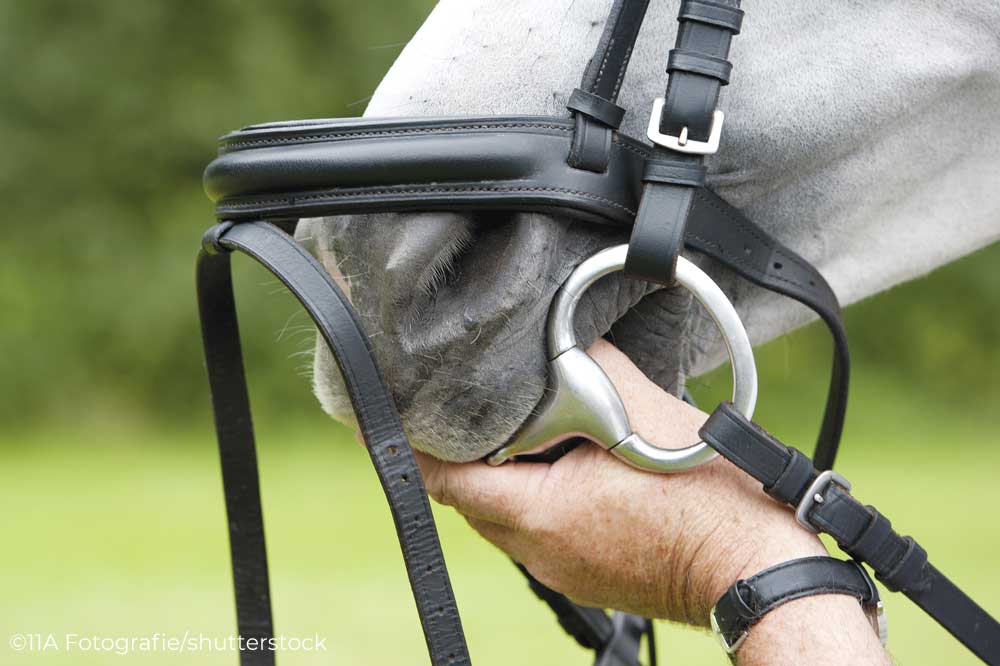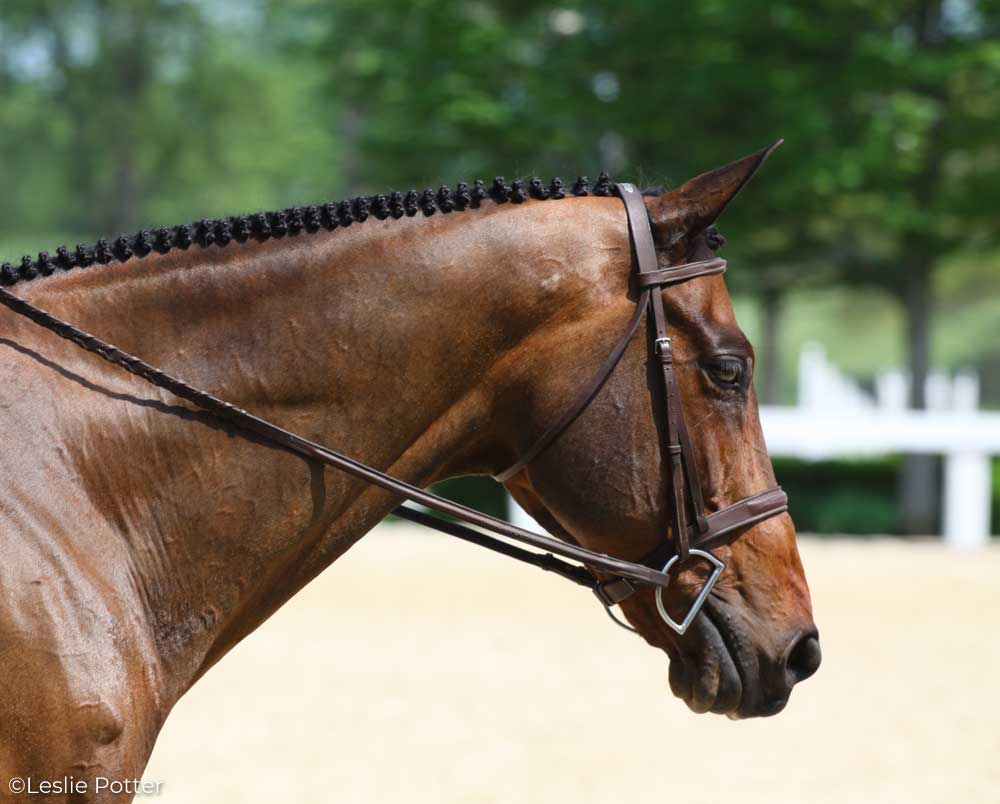The number of bits available are almost limitless. Most of us have a pretty hefty collection, and even then it’s just the tip of the iceberg. It can be a challenge to make a quick decision and pluck just one from the rack at the tack store. Rather than battle through the choices and end up with a wounded budget, check out this three-step guide to finding the best English bit for your horse.

Snaffle or Leverage English Bit?
Does your horse perform best in a snaffle or leverage bit? It’s important to understand the difference in function between these two types.
When it comes to snaffles, remember that a jointed mouthpiece does not define a snaffle. In fact, some snaffles, like a mullen mouth, have unjointed mouthpieces.
Snaffle Bits:
A snaffle is any style of bit that relies on simple, direct rein aids to guide and control the horse. If you pull on the reins with 10 ounces of pressure, 10 ounces of pressure will be exerted on the horse’s mouth. For these reasons, a snaffle bit is the go-to bit for encouraging all horses to bend, turn and become laterally supple.
Leverage Bits:
In contrast, leverage bits have a shank and a curb chain. These elements work together in a lever action. When the reins are pulled, the shank engages the curb chain, which then presses against the horse’s jaw.

Depending on the leverage bit’s specific design, varying degrees of pressure are also applied across the horse’s poll via the bridle’s crownpiece. As a result, the horse flexes at the poll and brings his nose inward to find relief.
In the wrong hands, leverage bits can inhibit a horse’s forward motion. Yet when used by skilled riders on schooled horses, they’re a good choice when collection and control are necessary.
What Type of Rings on Your English Bit?
The bit rings, located on each side of the mouthpiece, have nuanced functional aspects whether they’re part of a snaffle or curb English bit. Consider these options.
- Loose Ring: The rings of this snaffle freely rotate through the holes in the bit’s mouthpiece, making it hard for most horses to lock onto the bit and pull.
- Eggbutt: An oval shape, a thicker connection at the corners of the horse’s mouth, and bit rings with a fixed position make this a popular choice for sensitive horses.

Eggbutt French Link Snaffle - Full Cheek: Straight branches above and below this snaffle’s rings assist in turning a horse. For example, when the right rein is pulled, the full cheek on the left side simultaneously presses against the outer left side of the horse’s mouth.
- D-Ring: The perennial favorite for hunters. The straight bar edge at the front of the bit ring subtly aids in turning the horse in an action similar to the full cheek.

D-ring snaffle bit - Pelham: The top ring on a Pelham’s shank primarily functions as a snaffle. The lower ring activates the curb chain. Ideally, the rider adjusts the contact between snaffle and curb reins as necessary. To simplify the Pelham’s effect, bit converters can be buckled onto the shanks, allowing the use of a single rein.
- Kimberwicke: A modified leverage bit with D-shaped bit rings and a curb chain, the kimberwick uses a single rein. It’s popular with ponies and in English classes on the stock breed circuits.

- Kimberwicke bit
\What Type of Mouthpiece?
Your final step is to choose a bit with a specific mouthpiece. Although some mouthpieces are available on just snaffles or only curbs, it’s a good idea to understand how each type can affect your horse.
- Mullen: A solid (unjointed) mouthpiece that distributes fairly equal pressure across the horse’s tongue and onto the bars of the mouth. Typically considered a mild, uncomplicated design.
- Jointed: Mouthpieces with a single joint create a nutcracker effect across the tongue and against the jaw when the reins are pulled. Pressure is concentrated on the bars of the mouth.
- French Link: With its center link (shaped like a peanut), the French link lies flat across the tongue and greatly reduces the nutcracker action. Works well on horses with a low or shallow palate.

Loose ring snaffles from top to bottom: Single-jointed, French link, and mullen mouth - Dr. Bristol: Similar to the French link except that the center section is rectangular and set at an angle. This creates a pressure point on the horse’s tongue.
- Twisted: Ranging from slow twists to corkscrews and even twisted wire, these texturized mouthpieces are designed to evoke a quicker, lighter response from horses that lean on the bit. The harshest options are thinner with tighter twists to their design.

Full cheek snaffles with a twisted mouthpiece (top) and smooth mouthpiece. - Ported: The port allows room for the tongue (which some horses appreciate) in order to focus pressure on the bars.
- Rubber: The rubber can be either hard, vulcanized natural rubber or a more malleable synthetic. Both can encourage a horse to take more contact with the bit.
Riding in Three-rings
Sport horses that do a lot of galloping forward are often ridden in bits with odd sounding names like elevator, American gag, three-ring and Pessoa. Though they vary in design details, all of them employ leverage to prevent a horse from dropping his head, pulling against the bit and running off. Since they elicit a sharper, quicker response than a snaffle or Pelham, they should only be used by informed, knowledgeable riders.

Pulling on the reins makes the mouthpiece slide upward, encouraging the horse to become lighter on his front end. At the same time, the cheekpiece is pulled downward, exerting pressure through the crownpiece of the bridle. As a result, the horse flexes at the poll and yields to the bit, which ultimately gives the rider better stopping and turning power.
This article on English bits originally appeared in the June 2019 issue of Horse Illustrated magazine. Click here to subscribe!





